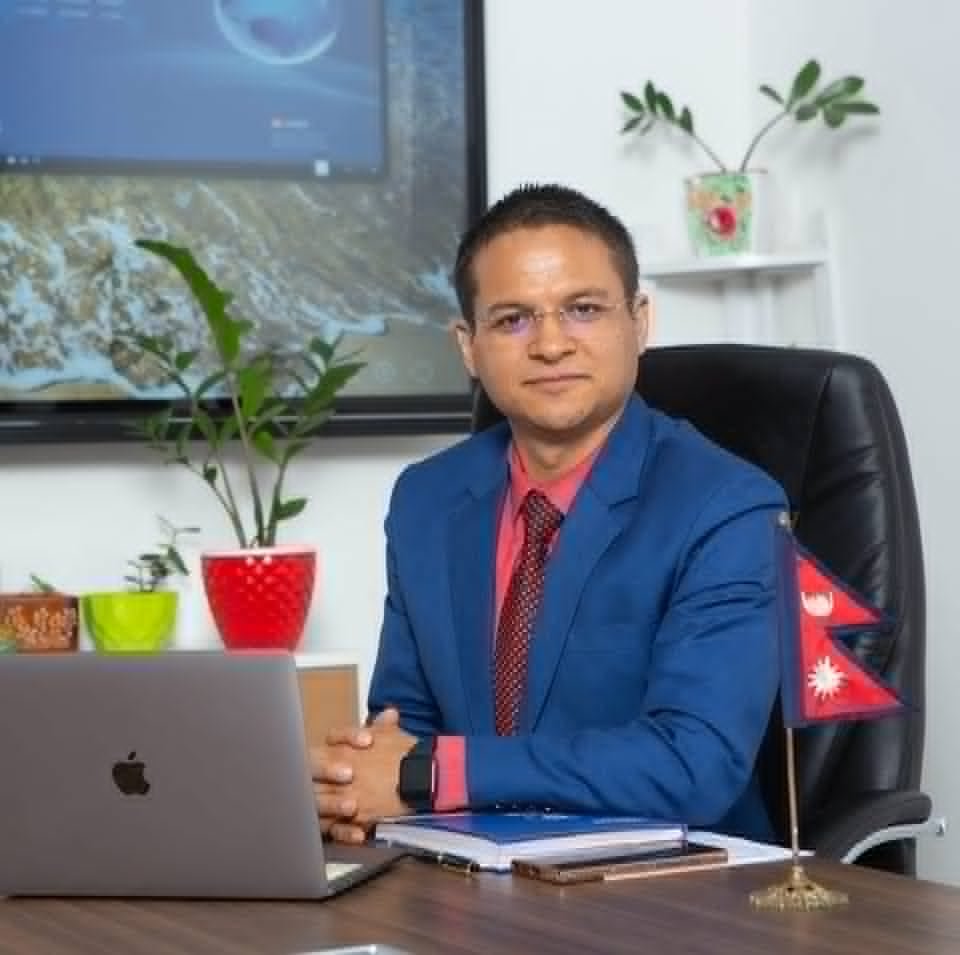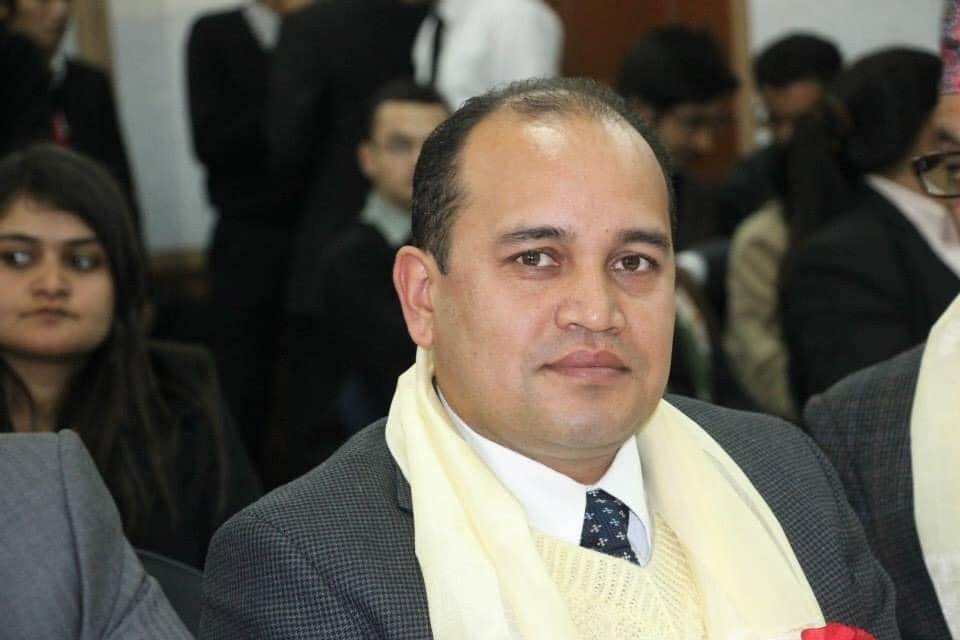Kathmandu Valley School Propels Learning via Technological Integration: Accentuates Creativity, Personalized Attention, and Pragmatic Pedagogy

Dr. Swagat Shrestha is a dynamic educator with multiple talents. He is the Chairperson of Kathmandu Valley School and the Vice-President of Central HISSAN. Under his leadership, Kathmandu Valley School/College has made significant progress in advancing students' learning process by integrating technology into classroom teaching. Dr. Swagat pays close attention to the progress of each student in his school, and he emphasizes the teaching-learning process with knowledge, skills, values, and technology, which are essential parameters for progressive learning. Recently, Jeetendra Ghimire, CEO of College Readers, had the opportunity to gain insights from Dr. Shrestha on education. Here are some excerpts from their conversation:
Dr. Swagat Shrestha is a dynamic educator with multiple talents. He is the Chairperson of Kathmandu Valley School and the Vice-President of Central HISSAN. Under his leadership, Kathmandu Valley School/College has made significant progress in advancing students' learning process by integrating technology into classroom teaching. Dr. Swagat pays close attention to the progress of each student in his school, and he emphasizes the teaching-learning process with knowledge, skills, values, and technology, which are essential parameters for progressive learning. Recently, Jeetendra Ghimire, CEO of College Readers, had the opportunity to gain insights from Dr. Shrestha on education. Here are some excerpts from their conversation:
What differences have you found between the earlier education system of Nepal and today’s progressive teaching-learning pedagogy?
There are several changes. Even in government schools, activity-based teaching methods have started. In comparison to the past, students have access to unlimited sources to acquire knowledge. In our time, we needed to depend on teachers, books, or notes, but now students can study from anywhere; the only requirement is a suitable environment. Even the evaluation methods have changed, and rote learning is not focused on. Instead, activity-based teaching and learning methods are applicable. Today’s education has a mixed-up system, which means purely activity-based for juniors while syllabus-covering methods for senior levels.
How have you ensured a learning environment for students, and how beneficial is it for the progress of students?
We have a slogan: “Education for life”. We have chosen applicable education over rote learning. We have various labs for the real-life application of bookish knowledge. We have good facilities such as computer labs, AI-based smart projectors in classes, libraries, trained teachers, special training for hotel management students, and various training for students. We prioritize classroom activities and practical knowledge. We even teach junior students through games. We believe in motivating students to study rather than pressuring them. Today, students don’t need to depend on teachers for knowledge; they have many options and sources.
Advancements in technology are somehow killing the creativity and critical thinking of students. What do you think about it?
Everything has both pros and cons. Technology has both positive and harmful uses; it depends on the person using it. We believe tasks should be done according to the needs of the time. Technology is saving both time and effort. We are trying to save the creativity of students by making creative questions in exams with no cheating possibility. We are encouraging students to research. Schools and colleges should give education, not just information. We should not judge students only based on marks and their memorizing capacity.
How successful is Kathmandu Valley School in providing a creative environment for students?
Problems and solutions in examinations are similar for all students, but real-life problems and solutions vary from individual to individual. We are focused on making students creative and have trained teachers for that. We give projects that require critical analysis and creativity. We equally prioritize the memorization of subject matters and their real-life application.
What are the initiatives of Kathmandu Valley School for enhancing quality education?
We have started with trained teachers, infrastructure development, and research labs. We believe in “winners don’t do different things but do the same things differently”. We are focusing on communication with parents and individual care for students. We are trying to set examples for our students.
We see parents have high expectations for their children, but a child can't possess every quality. How have you balanced this?
I think parents are not wrong. In the past, parents used to have many children with different qualities, but now only one is expected to have all the qualities, which creates pressure on them. We talk with parents and try to make them understand that every child is differently abled. We should encourage them in their field rather than making comparisons with others. Being top in every aspect is not possible and expecting that from a child is not right. Students should be disciplined, moral, and responsible citizens first. We respect our parents’ wishes, but we don’t accept pressure on students. Only being toppers in schools does not make successful people; wisdom, hard work, and good habits are also very important. There should be a good relationship between parents and children. According to research, only 20% of the time is spent by students in schools. So, parents should not hope for magic in schools but give time to their children. Children learn from their parents, so they should set good examples for their children. We should create a respectful environment for students too.
Every student is differently abled. How have you balanced the opportunities between talented and academically poor students?
We cannot expect equal performance from every student. In the classroom, we have created an equal environment. For academically poor students whose parents cannot help them in their studies, we have conducted extra classes for them where they are individually observed. Similarly, we have a provision of keeping two teachers in the classroom where the co-teacher especially focuses on weak students.
What are the major attractions of Kathmandu Valley School?
We have been providing quality education at a reasonable cost for 26 years. We don’t charge extra for tuition. We have A-grade infrastructures and resources. We have a good student-teacher ratio. We have 150 staff for 700 students. We take very good care of students individually. Being related to the technological field, I have ensured that every student experiences technological advancements. Recently, our students won the robotics competition. We have a homely environment and a central location for the school.
Finally, what message would you like to convey to the parents?
The school-parent relationship plays a crucial role in identifying and nurturing the true talents of students. Therefore, I would like to express my gratitude to the parents for their supportive role and encourage them to recognize their child's hidden talents and help them develop an interest in learning for meaningful outcomes.





